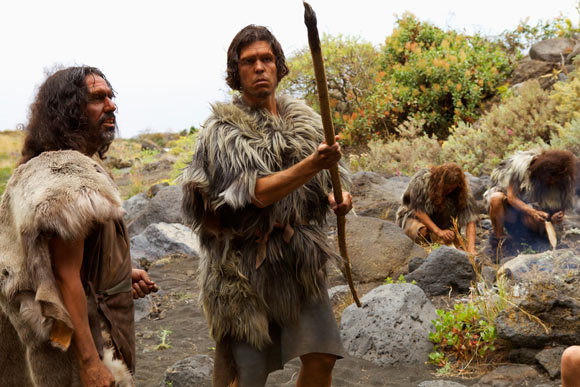
Archaeologists have unearthed hundreds of Clovis stone tools at the 13,000-year-old campsite of Belson in southwest Michigan; Clovis people traveled to this site annually, probably in the summer, for at least three but likely up to five consecutive years; the stone artifacts also show evidence that the settlers’ diets included a wide variety of animals, ranging from rabbits to musk ox.

Clovis people likely returned to the Belson campsite in southwest Michigan for several years in a row. Image credit: University of Utah via kued.org.
The Belson site is located on an outwash plain draining the Early Algonquin stage of the central Great Lakes southwest across Lower Michigan into the Ohio tributaries.
At the site, the archaeologists discovered tools that were made with a type of stone called chert from what is now western Kentucky, about 644 km (400 miles) from the Belson site.
These tools were then resharpened at the site, leaving behind small pieces for the researchers to analyze.
Some of these chert pieces were from Paoli chert, which formed in northeastern Kentucky.
“It took me a year to identify it, and when I did, it was very surprising,” said Thomas Talbot, an independent researcher and member of the team.
“Then we found a broken base, which we call a diagnostic.”
“The broken base was made from that Paoli material.”
“Once you read the paper and look at the data and maps, there are some patterns that are starting to emerge that are pretty cool.”
“The tools made in what is now Kentucky were traded to people in central Indiana, who then carried them to the Belson site.”
“This suggests that the people who settled the Belson site likely moved there during summers and lived in central Indiana during the winter,” said Brendan Nash, doctoral student at the University of Michigan.
“They in turn likely traded for the tools from western Kentucky from people who moved from central Indiana to Kentucky on yearly routes.”
“In this way, people formed ‘links in a chain’ with yearly routes that likely connected the whole continent, from Michigan to Mexico.”
“This is likely why technology from the Clovis period is so similar throughout most of North America.”
The researchers also examined three of the dozens of discovered stone tools for traces of protein.
They found evidence for musk ox, caribou or deer, hare and peccary, a Pleistocene relative of the pig. The hare and peccary protein came from the same Clovis point.
“Taken together, the ancient protein data suggest that these people had a broad spectrum diet, eating a wide variety of animals,” Nash said.
“Our findings are contrary to the popular notion that Clovis people were strictly big game hunters, most often subsisting on mammoths and mastodons.”
“The Clovis people would have also eaten plants, but plant material does not show up on protein tests, and unlike animal bones, their remains don’t typically last for 13,000 years.”
“This site teaches us about a way of life lost to time.”
“Through the sourcing of stone and the styles of tools, we are tracking a group of people as they live and travel across the Pleistocene landscape of the American Midwest.”
The study was published in the journal PLoS ONE.
_____
B. Nash et al. 2024. Clovis organizational dynamics at a Late Glacial campsite in the central Great Lakes: Belson site excavations 2020-2021. PLoS ONE 19 (5): e0302255; doi: 10.1371/journal.pone.0302255
 Print
Print


